In the year that Porsche celebrates the 50th anniversary of the 911 and exactly 40 years after the introduction of the first Porsche 911 Turbo, Porsche launches the next-generation 911 Turbo and Turbo S. Ahead of its official public debut at the Frankfurt Motor Show 2013, we drove the Porsche 991 Turbo and Turbo S in North Rhine-Westphalia.
With several innovations, the Porsche 991 Turbo aims to set the bar higher once again. With 560 hp and max torque of 750 Nm the new Turbo S certainly impresses on paper. But how does it compare to the previous generation 911 Turbo and 997 GT2? Continue reading to find out!
The Engine
The 2014 Porsche 991 Turbo comes with a turbocharged 3.8-litre six-cylinder with direct petrol injection producing 520 hp in the 911 Turbo and 560 hp in the Turbo S. It comes with two turbochargers and variable turbine geometry. Together with a new thermal management system for the turbo engine, fuel efficiency technologies have reduced average fuel consumption up to 16% to 9.7 liter per 100km.
Compared to previous models, the power level of the 911 Turbo was boosted by 20 hp and its torque was increased 10 Newton metres up to 660Nm. In the S model, power was increased by 30 hp and torque was increased by 10 Nm to 710 Nm. The increased power of the new 911 Turbo was achieved primarily through improving engine efficiency with higher combustion pressures, new valve timing and ignition angle tuning. In the engine of the S model, charge pressure was increased to 1.2 bar to enhance power and maximum engine speed was increased 200 rpm to 7,200 rpm.
The Sport Chrono package on the new Turbo and Turbo S offers increased torque thanks to the the overboost function. It increases maximum charge pressure by around 0.15 bar for up to 20 seconds in the mid speed range; this increases the maximum torque available to 750 Nm. The pistons were reinforced and modified to ensure that the new 911 Turbo engines can withstand the higher loads associated with higher power and torque values.
Performance
Acceleration in the new 991 Turbo takes 3.4 seconds from 0-100 km/h and 11.1 seconds from 0-200 km/h. Top speed is limited to 315 km/h. With the optional Sport Chrono Package the Turbo does the sprint to 100km/h 0.2 seconds faster with a total time of in 3.2 seconds. The sprint to 200 km/h is 0.3 seconds faster at a total of 10.8 seconds.
The 2014 Porsche 991 Turbo S takes just 3.1 seconds from 0-100 km/h and 10.3 seconds from 0-200 km/h. The top speed of the Turbo S is limited to 318 km/h.
Gearbox & Drivetrain
Both 911 Turbo and Turbo S come exclusively with a further developed 7-Speed PDK Doppelkupplung which features new functions optimised for performance. For example, Porsche engineers supplemented the seven driving gears by adding virtual intermediate gears that further improve fuel economy and comfort. They are used to reduce engine speed during an undisturbed, constant-speed mode of driving, when the next higher gear would reduce engine speed below the specified lower speed limit. To do this, the transmission controller engages adjacent gear levels and controls the two clutches for defined slip in transferring the drive power. When the driver presses the accelerator pedal, the Doppelkupplung downshifts to the suitable gear with lightning speed.
The dynamic engine speed adjustment feature delivers even quicker gear changes in both downshifts and upshifts. During downshifts, the controller outputs intermediate acceleration pulses which are relatively comfort-oriented in the base setting and very dynamic in the Sport or Sport Plus modes. During upshifts, engine speed adjustment functionality utilises masking of engine injection in the Sport modes.
For even quicker and more specific power distribution to the two axles, Porsche evolved its currently all-wheel drive system (PTM) with electro-hydraulic control of its multi-plate coupling. This functional principle enables faster and more precise control of the coupling. The result is more dynamic and more precise control of drive forces to the front axle with benefits in traction and vehicle dynamics. In addition, the new system can now direct more drive torque to the front axle, whose transfer case was provided with a new water cooling system.
The redesigned PDK is so much quicker than a manual would have been that Porsche decided to leave out the manual option entirely. This probably marks the disappearance of the manual for further Porsche cars in general (with possible exception of the Boxster and Cayman). Do we miss it? We have to admit that we are very happy with the PDK, and we believe only the purest of purist will be disappointed with the disappearance of the manual gearbox in the 911 Turbo, GT3 and next-gen GT2.
Suspension & Chassis
The body of the new 911 Turbo models is based on the 991 Carrera body structure; as a result, it is based on intelligent lightweight design that utilises aluminium-steel composite construction. Along with extensive use of aluminium and polymer surfaces to reduce vehicle weight, the local use of ultra-high-strength steel offers high body rigidity for ideal occupant protection and excellent dynamic performance. The weight of the body-in-white was reduced 13 per cent compared to the previous models.
This basic concept represents the foundation for the substantial performance gains in the new 991 Turbo generation. Simply lengthening the wheelbase by 100 mm in conjunction with a wider front track – 51 mm wider in the 911 Turbo and 49 mm wider in the 911 Turbo S – creates a completely new geometry with greater tracking and roll stability at high speeds on straight-aways and in bends. The lowered centre of gravity improves dynamic performance and agility, and the body’s considerably greater rigidity provides the back bone for the highly precise chassis.
New on the Porsche 911 Turbo is rear axle steering, first seen on the Porsche 991 GT3. Active rear axle steering consists of two electromechanical actuators, which are used on the left and right of the rear axle instead of the conventional track steering units. The steering angle of the rear wheels may be varied as a function of vehicle speed: by up to 2.8 degrees in a direction opposite to that of the front axle’s steering angle or up to 1.5 degrees in the same direction as front wheel steering. By comparison: A steering angle of 2.8 degrees at the wheels of the front axle is equivalent to a steering angle of around 45 degrees on the steering wheel from the centre position.
Two effects can be achieved by varying the directions in which the two axles are turned. When the front and rear wheels are steered in opposite directions, the sports car drives like a model with a significantly shorter wheelbase. Exhibiting astonishing manoeuvrability, it steers and handles with better agility in bends. The system sets this functionality at speeds below 50 km/h, which also makes manoeuvring and parking noticeably easier in everyday driving.
Adaptive Aerodynamics
The new Porsche 911 Turbo features new adaptive aerodynamics. As a result, it attains an entirely new bandwidth of everyday utility, efficiency and performance, setting some of the highest values in each of these three disciplines. Porsche Active Aerodynamics (PAA) breaks down the barriers that limit conventional sports cars. Without active components, aerodynamic tuning always represents a compromise – primarily between efficiency and circuit racing performance.
Based on a unique combination of a front spoiler that can be extended in multiple stages and a rear slotted wing that is adjustable in height and attack angle, the 911 Turbo can adapt its aerodynamic shape to the current situation and to customer wishes at the press of a button. It is the first vehicle that can switch back and forth between different aerodynamic modes while preserving the balance of aerodynamic lift between the front and rear axles.
PAA controls the front spoiler and rear wing in three basic modes. At the start, both are fully retracted. When the front spoiler is folded back, this enables a significantly larger approach angle than in the previous model. It is now 10.3 degrees instead of 7.8 degrees, and ground clearance is now 156 mm instead of 139 mm. This means less scratching and easier to use the 991 Turbo on a daily basis.
PAA stays in this mode up to a vehicle speed of 120 km/h, then the Speed mode is initiated, in which the two outer segments of the three-part front spoiler are extended. This diverts more air around the body, which reduces aerodynamic lift at the front axle. At the same time, the rear wing is extended 25 mm upwards. In this configuration, the total air drag of the new 911 Turbo is very low; this improves fuel economy and the sports car reaches its maximum speed 315 km/h or 318 km/h in the S model. When the car’s speed drops below 80 km/h, PAA automatically switches back to the base setting.
The Performance mode adds an entirely new aerodynamic dimension to the top 911. The forces generated by air flow illustrate this quite well: At 300 km/h in Performance mode the sports car generates 132 kg of downforce. This means that the maximum possible transverse acceleration grows by ten per cent at this speed – just as a result of downforces. To generate these forces, the middle section of the front spoiler is also extended. The air
is diverted further around the vehicle, and a low pressure zone is created behind the spoiler. Simultaneously, the rear wing is extended to a height of 75 mm and is angled forward seven degrees.
The aerodynamic bandwidth of the new 911 Turbo effortlessly reaches performance zones that were previously reserved for Porsche’s GT sports cars. Just switching from the Speed mode to the Performance mode, the vehicle dynamics potential of the new 911 Turbo is improved to such an extent that it shortens the lap time on the North Loop of the Nürburgring by a clear two seconds.
Design
As with previous generations Porsche 911 Turbo, the design builds strongly on its predecessor and incorporates a few key design elements. The large cooling air intakes above the rear wheels and the rear wing have become a signature for the 911 Turbo. In the 991 Turbo and Turbo S their shapes have become slightly different. The largest impact on the design has to be the bigger wheels, wider track width in the rear and the new LED headlights.
The bigger rear wheels have added to one of the most difficult engineering challenges in the development of the Porsche 991 Turbo. The main challenge was the simple fact that they provide less space for the cooling air inlet. The wing folds out in two different heights depending on the engaged setting (speed; automatically engaged above 120 km/h or performance; manually engaged with the Sport Plus setting).
A special aspect of the new front body is the fact that the front spoiler is fully hidden in its retracted position. This gives the new top 911 a significantly lighter and more elegant frontal appearance. When the front spoiler is extended, however, the car shows its second performance-oriented look. This is highlighted by the central “turbo” or “turbo S” badge on the lip of the black spoiler. Like the rear wing this front lip has three settings, hidden, speed or performance. With speed only the side lips unfold, improving airflow and high speed stability.
Interior
Inside the 2014 Porsche 991 Turbo is based on the design of the 991 Carrera. The cabin of the Porsche 911 Turbo is a pleasant place to be, the seats offer perfect support and can be fully adjusted electrically. All Turbos come with a Sound Symposer, which transmits air induction sounds of the turbo engine to the interior via a diaphragm after the sport or sport plus mode has been activated.
The steering wheel has two displays that show when Sport, Sport Plus or Launch Control is engaged. For entertainment there is a range of options to connect phone and media devices or listen to DAB (digital radio). Optionally a Burmester high-end sound system can be chosen, according to our friend and audio expert Ian Kuah, one of the best high-end car audio systems on the market today.
Driving Experience
The ingredients for our day with the Porsche 991 Turbo and 991 Turbo S couldn’t have been better; a range of brand new Porsche 911 Turbos, sunshine, some incredible B-roads, a stretch of unlimited autobahn and a race track at our disposal! So where do you start? In front of our hotel a lineup of bright colored Turbos await us. We chose to get behind the wheel of a Porsche 911 Turbo first.
This particular 991 Turbo comes with the optional Sport Chrono Package and all Turbo innovations like the Adaptive Aerodynamics and rear-wheel steering. Driving from our hotel in the small village of Bad Driburg towards the Bilster Berg race track we explore the various settings and menus. On the small display right next to the rev counter you get common displays like trip and navigation but also a G-Force meter and torque curve that show the overboost available when the Sport Plus mode is activated.
Near the new Bilster Berg race track are some very beautiful and quiet roads that offer a good proving ground to see how the 911 Turbo behaves. Around town you will notice how easy it is to drive, especially with all the (optional) luxury features like park distance control, high-end Burmeister sound system, seat heating and cooling, adaptive cruise control you could easily get the feeling you are driving a luxury limousine instead of a high-performance sportscar.
Leave town and head out to the open roads and the Turbo impresses with its staggering performance and what seems like endless grip. Steering is direct and with the optional power steering, very light when maneuvering at lower speeds. At higher speeds it becomes heavier in a near linear fashion. In the normal mode the Porsche 991 Turbo acts like a grand-tourer, it shifts up early but put your foot down to overtake and the PDK drops a few gears and you are propelled forward with a typical turbo woosh appearing from behind.
Click on Sport in the center console and you are treated by a louder soundtrack in the cabin thanks to a diaphragm that allows more engine and exhaust noise into the cabin. The sound is typically Porsche, but take your foot off the throttle and you are treated with a new sound, that resembles a short salvo of heavy machine gun fire. A unique and addictive sound track that kept us entertained throughout the day. The exhaust is not as loud as we personally might have liked (even in sport), but overall it fits the Porsche 991 Turbo well.
Switch to Sport Plus and the throttle response improves, the adaptive aerodynamics extend the spoiler and fully fold out the front lip, the PDK changes to a sportier program that holds gears longer and keeps you in a lower gear for a longer duration and the active anti-roll bars engage along with some other magic that makes the Turbo sportier and corner quicker than you can imagine. On the public roads, even without traffic it is hard to test the true performance- and cornering potential of the Turbo. So we head to Bilster Berg for a first introduction with the new 911 Turbo on track.
After a short briefing we get the chance to head out on track with the new 911 Turbo and Turbo S in small groups. Bilster Berg can best be described as a mini-Nurburgring with a lot of height difference and blind corners. On this track the 911 Turbo impresses with its brute acceleration and cornering grip, thanks to the new all-wheel drive system the balance is very neutral and grip seems to last forever. Push hard on the exit of tight corners and you are treated with a hint of oversteer, but the 911 Turbo is more serious than playful, the 911 Turbo foremost likes to go fast and it demonstrates it with overwhelming ease at Bilster Berg.
After a few laps in which we continue to gain the confidence required to brake later and carry more speed through the corners, we pull into the pits to change into the Turbo S. Besides the ceramic brakes, the Turbo S also packs 40 hp more over the Turbo we were driving. The acceleration becomes more brutal, making the gap with any Turbo behind us bigger after every straight. The ceramic brakes grip equally brutal allowing for even later braking and faster lap times. In essence the Turbo and Turbo S are very similar, but in excitement the Turbo S offers just a tad extra over the standard Turbo.
This is best illustrated by the launch control available in every car equipped with the Sport Chrono Package. On the skid pad of Bilster Berg a small straight and handling course offered the perfect opportunity to test this feature. Engage Sport Plus, PDK in Drive, left foot on the brake, right foot full on the bottom… wait for the launch control light to show on the steering wheel, release the brake and off you go. The digital speedometer reads: 24, 36, 47, 59, 71, 80, 89, 97, 105, 112, 120, 130 km/h… Hard braking… Back to zero in what seems like just 30-40 meter.
We return to the start line and do it again, same result. Over and over again the Porsche 991 Turbo S flies off as if its launched from a catapult. It feels like the launch control of a Bugatti Veyron without dragging the weight of a Veyron. The launch control is a gimmick that most owners will not use often but it is highly impressive to experience the accelerating forces of the new 991 Turbo S. It is so fierce that it ripped the Iphone used to film by our co-driver straight out of his hands.
Switched to a Graphite Red Porsche 991 Turbo S it is time for us to head back onto the normal roads and experience what the Turbo S is like in the public domain. We head out to the German highway A33 near Paderborn at the beginning of the afternoon to see how at home the Turbo S is on the unlimited autobahn. On the way there the Turbo S proves to possess the same qualities as an excellent daily driver as the regular Turbo. The ride is sporty but never too hard, inside the cabin it is very quiet when you don’t select Sport or Sport Plus and you could even take two kids or some extra luggage on the back seats.
On the autobahn this daily driver changes effortlessly into a sportscar with supercar worthy performance available at will under your right foot. Every kilometer you will travel at the autobahn regardless of the speed you feel that Porsche put as much emphasis on making the Porsche 991 Turbo S perfect for the autobahn as it did developing it for the race track. Gear changes go quicker than the blink of an eye and the balance remains also at ultra high speeds. We doubt you have to worry coming across (m)any cars on the autobahn that are faster than the new 911 Turbo S.
After a brief photo shoot at a British army base near Paderborn we return to Bilster Berg for the last time over some of the best roads we have ever driven. With traffic so rare that we started to doubt if there were any people living there at all, we pass giant windmills with an uninterrupted pace. Just before Bilster Berg there is one last hill with several hairpin turns, driving the Turbo S up here puts a smile on our face one last time.
On the way to the airport we can recap our driving experience with the Turbo and Turbo S. Both are amazing all-round cars packed with both performance and luxury. The seats are among the best seats we have ever sat in. The acceleration in the Turbo S is breathtaking (literally). On track the grip and brake force is impressive. Summing it up like this it made us wonder if there was anything we didn’t like? Surprisingly little. Yes, there is little storage space, our Iphones flew through the car more than once. And yes, the Porsche 991 Turbo S doesn’t get as many looks as other cars in this price range on the German roads and the exhaust note could be a bit louder. But if that’s it, the new 991 Turbo S seems like a well refined, pretty perfect ride.
Porsche 911 Turbo vs Turbo S
The 991 Turbo S can be seen as a ‘full option’ Turbo with an additional 40 hp and 40 Nm of torque. This lifts the total output to an impressive 560 hp. Desirable options including the Sport Chrono Package, LED Headlights, ceramic brakes and active anti roll bars are standard equipment on the Porsche 991 Turbo S. All this roughly adds a 2014 Golf GTI to the price tag though.
The standard Sport Chrono Package on the 991 Turbo S includes an overboost function that adds another 50 Nm of torque in Sport Plus mode lifting the total to 750 Nm between 2,200 and 4,000 RPM. Sprint from 0-100 km/h takes 3.1 seconds in the Turbo S compared to 3.4 in a non Sport Chrono Package Turbo. 0-200 km/h takes 10.3 seconds in the Turbo S compared to 11.1 in the Turbo. Top speed is limited to 315 km/h in the Turbo vs 318 km/h in the Turbo S.
A majority of the customers will chose a 991 Turbo S according to Porsche. Around 65% of the previous generation 911 Turbos were ordered as a Turbo S, and Porsche expects this will be about the same for the 991 Turbo S.
Porsche 997 Turbo vs 991 Turbo
In comparison to the last generation Turbo Porsche again pushed the benchmark even further forwards. Its faster, more practical and better handling. It packs a lot more gadgets, larger brakes, larger wheels but maintains the same weight. The new 911 Turbo is longer and wider, offering higher stability, it has a lower center of gravity, improving agility. 20 hp more, real wheel steering, adaptive aerodynamics, a new AWD system and a further developed PDK improve the overall performance and the laptimes compared to the previous generation 911 Turbo with several seconds.
Porsche 991 Turbo S vs 997 GT2
We wondered how the new 991 Turbo S compares to the ultimate version of the last generation 911, the GT2 (limited edition GT2 RS aside). So we caught up with a Porsche 997 GT2 for a little showdown. Power wise the 991 Turbo S is clearly in favor with 560 hp vs 530 hp in the GT2. However the GT2 weighs significantly less with 1440kg vs 1605kg in the Turbo S. Other major differences include the manual and RWD in the GT2 vs PDK and AWD in the Turbo S.
On the sprint from 0-100 km/h the manual GT2 with its RWD stands no match against the launch control of the AWD PDK Turbo S. The Turbo S crosses the 100 km/h mark in 3.1 seconds while the GT2 takes half a second longer. The acceleration from standstill also feels much more brutal in the Turbo S. The strength of the GT2 shows at higher speeds when traction is not an issue. Sprint from 140 km/h and both cars accelerate at roughly the same, yet incredible pace, above 200 km/h the GT2 starts to gain and ultimately tops out well above the 318 km/h top speed of the Turbo S.
It comes as no surprise though that the Turbo S is the more comfortable car, and for a car as well and luxurious equipped as the Turbo S its impressive how it holds up against the hardcore GT2. It will be very interesting to see how the Turbo S does against the GT2 around the Nurburgring. Of course our little rendezvous also wet our appetite for the 991 GT2 that was spied recently.
What to Spec on a 991 Turbo?
Porsche makes good money with the optional extra’s for their cars and even for the 911 Turbo the list of optional extra’s seems endless. We had a look through the list of options and added our favorites to the list below. The Turbo S offers a lot of desirable systems that are optional on the Turbo as standard and also includes 40hp more. So if you are looking to go for a full option Turbo you can just as well go for the Turbo S.
A large difference in price between the Turbo and Turbo S is made by the standard Porsche Ceramic Composite Brakes (PCCB) on the Turbo S, which cost nearly 10,000 Euro in Germany. These brakes are great but only if you plan to take the 911 Turbo on track regularly it justifies the investment.
- Sport Chrono Package: Without it the Porsche 911 Turbo is simply not the same. The Sport Chrono Package offers the Sport Plus button in the center console. Sport Plus tightens everything including throttle responds and includes the launch control function.
- Porsche Dynamic Chassis Control (PDCC): These computer controlled active anti-roll bars increase stiffness around bends and reduce body roll. Whether you should spec this or not depends more or less on your driving style. If you plan to take your car on track and push it hard definitely consider to spec this. On the public road however you won’t feel much improvement over the base car’s already excellent cornering abilities.
- LED Headlights with Porsche Dynamic Light System Plus (PDLS+): Adapts the distance and angle of your headlights based on your speed, cornering or oncoming traffic for best possible view in the dark. Also comes with the 4 LED daytime running lights that give the car a cool look.
- Adaptive Cruise Control with Porsche Active Safe (PAS): Plan to use your Porsche 911 Turbo as a daily driver? Than this is must, adaptive cruise control makes long journeys on our congested roads much more comfortable and safer, even in a 911 Turbo.
- Speed Limit Detection: This system detects the speed limit on the road you are driving on. Keeping an eye on it will probably help save you a lot more in speeding tickets than the 400 euro investment this system requires.
- Seat Air Conditioning: Great feature that blows cool air directly from the seat.
What to Spec on a 991 Turbo S?
On the 991 Turbo S our what to spec list looks a bit different because driving dynamic related systems are included as standard. What does remain on the option list however are all entertainment related systems and things like parking sensors. Most of these things are subject to personal preference. However these three things we would recommend:
- Adaptive Cruise Control with Porsche Active Safe (PAS): Plan to use your Porsche 911 Turbo as a daily driver? Than this is must, adaptive cruise control makes long journeys on our congested roads much more comfortable and safer, even in a 911 Turbo.
- Speed Limit Detection: This system detects the speed limit on the road you are driving on. Keeping an eye on it will probably help save you a lot more in speeding tickets than the 400 euro investment this system requires.
- Seat Air Conditioning: Great feature that blows cool air directly from the seat.
What about the competition?
The Porsche 911 Turbo S moves in a similar price range as the Ferrari 458 Italia and McLaren 12C. Performance wise the 991 Turbo S comes very close to the Ferrari and McLaren, but the 991 Turbo (S) has a few characteristics that set it apart from the competition. The Porsche 991 Turbo reached a level of perfection that is hard to believe, you can drive it every day; in the city, on the autobahn or on track and no matter what destination or purpose we doubt it will disappoint. It also offers a level of daily driver appeal and practicality far greater than with most, if not all, other cars in this segment.
One aspect where it looses from the competition is appeal or show-off factor if you will. With the 911 such an incredible success for 50 years and tens of thousands of them seen on the road all around the world on a daily basis, the 991 Turbo is not nearly as exotic or loud as a Ferrari 458 Italia or McLaren 12C.
Conclusion
The 2014 Porsche 991 Turbo and Turbo S approach perfection with an incredible package that combines luxury with performance like never before. It holds a lot more supercar than it looks initially give away. We praise the ability to change from a comfortable and sophisticated daily driver to a supercar killer on track at the touch of a button.

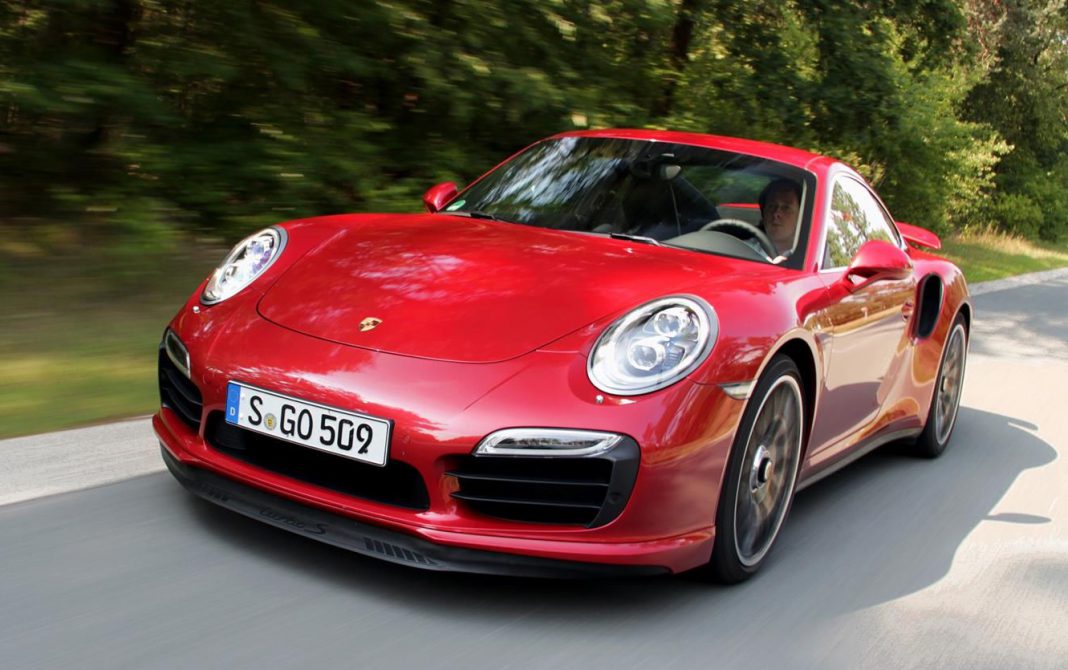

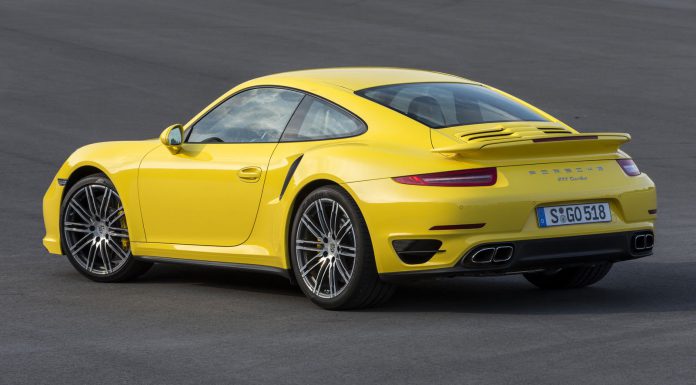




















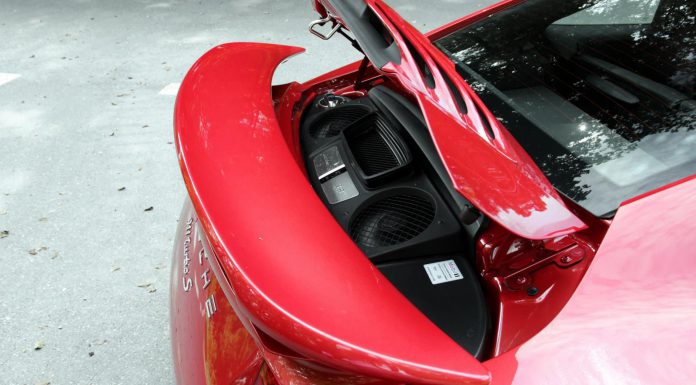
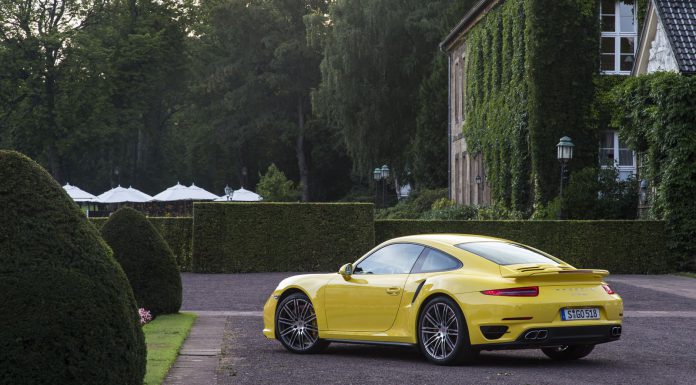
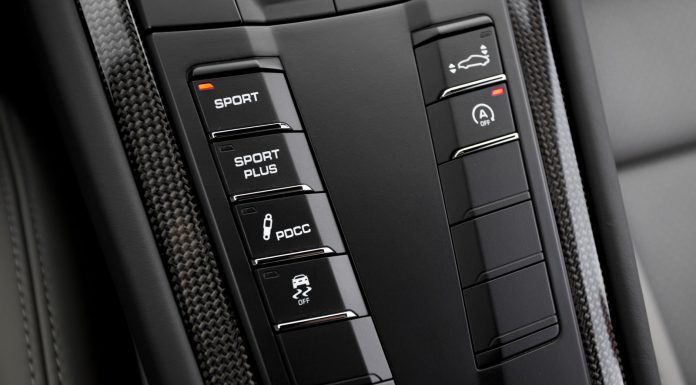
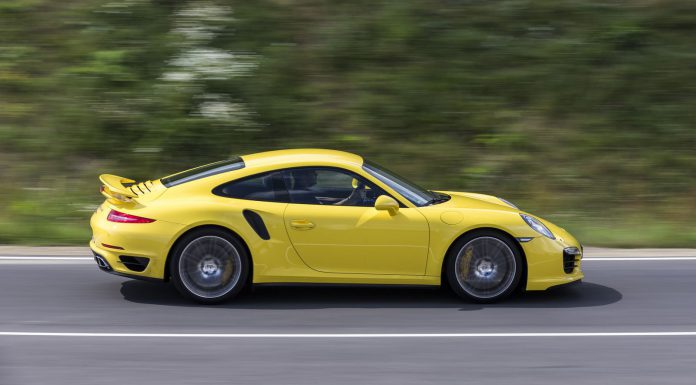
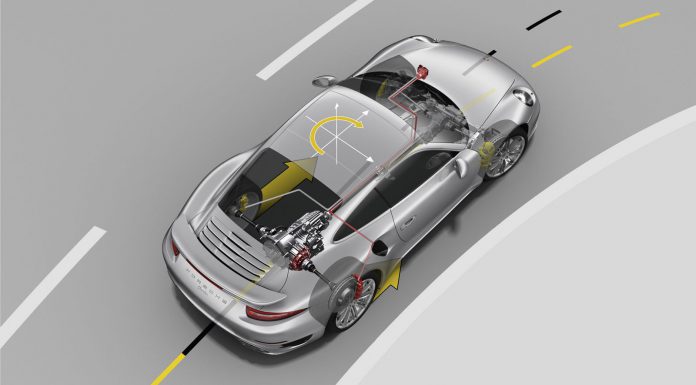
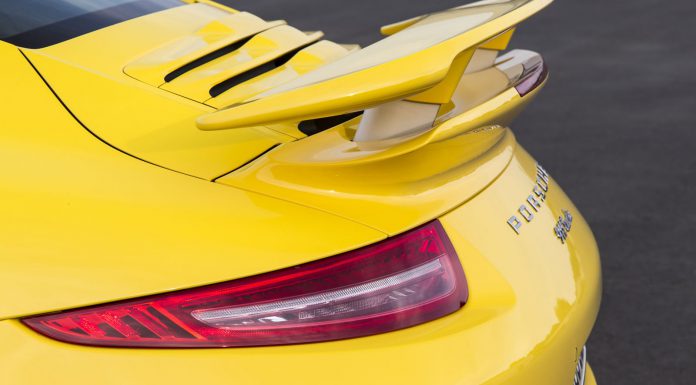



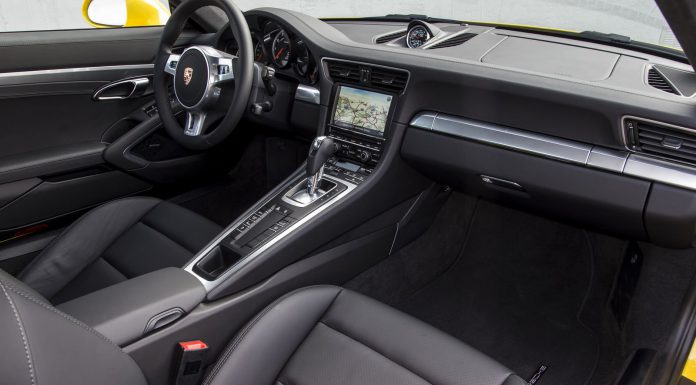















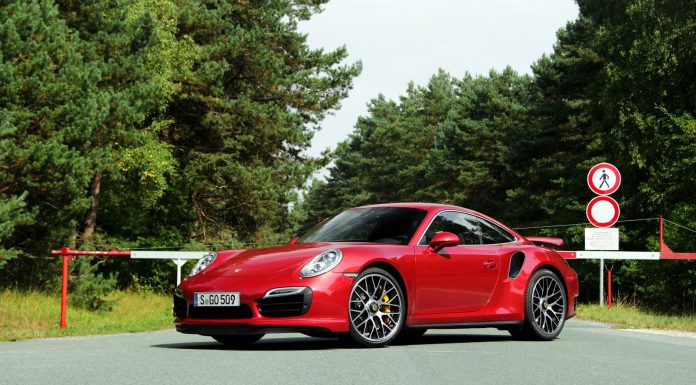










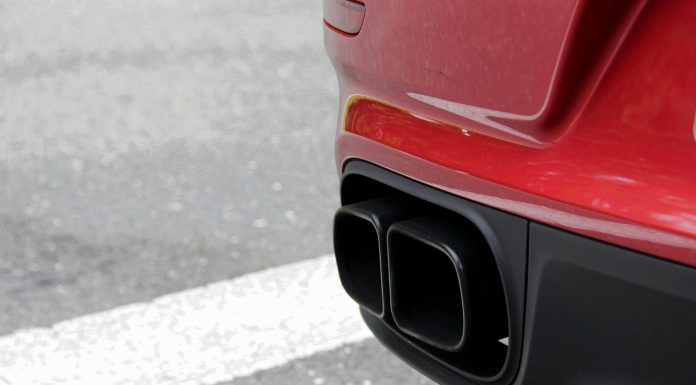
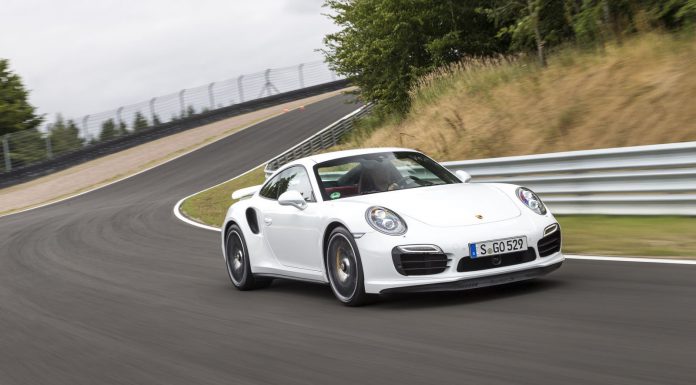










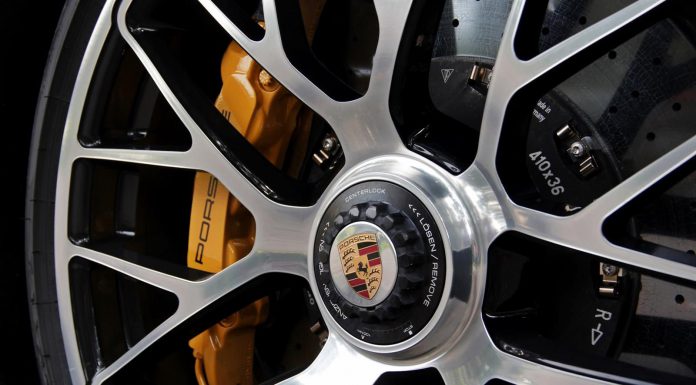





















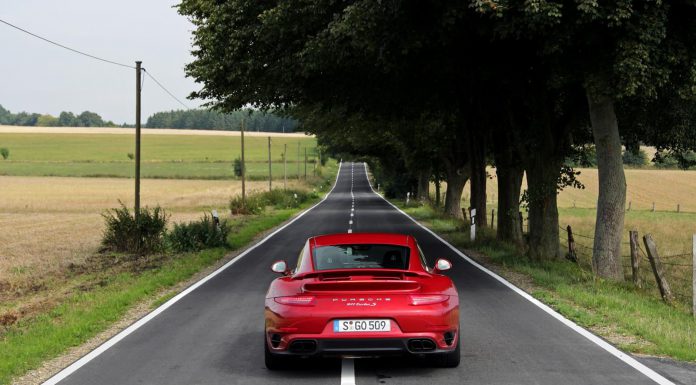
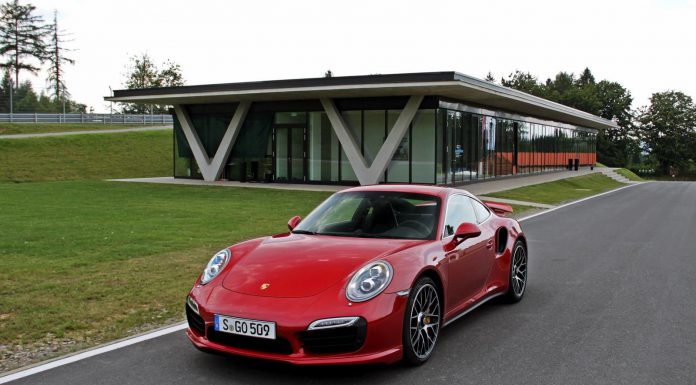
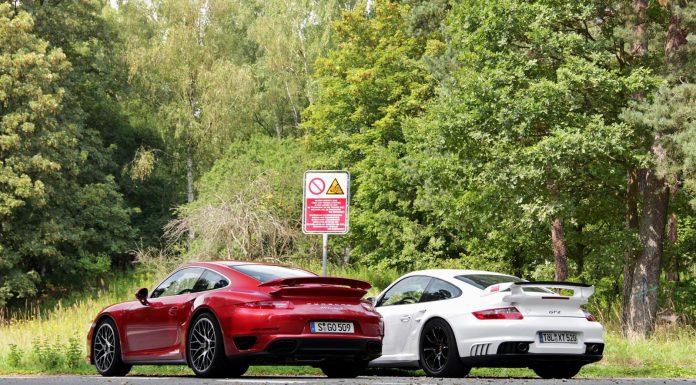





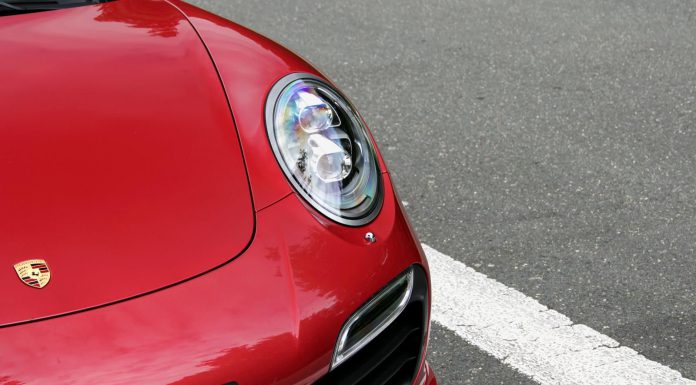
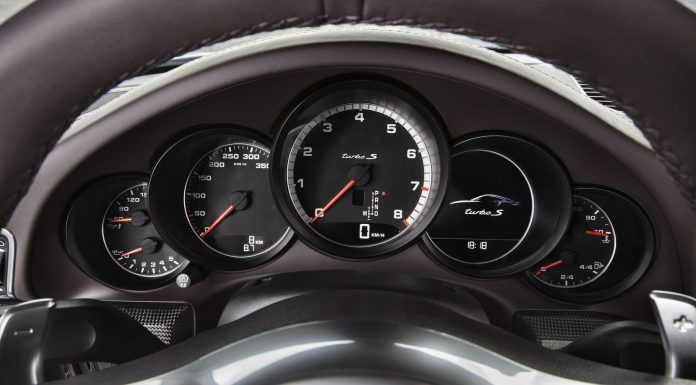
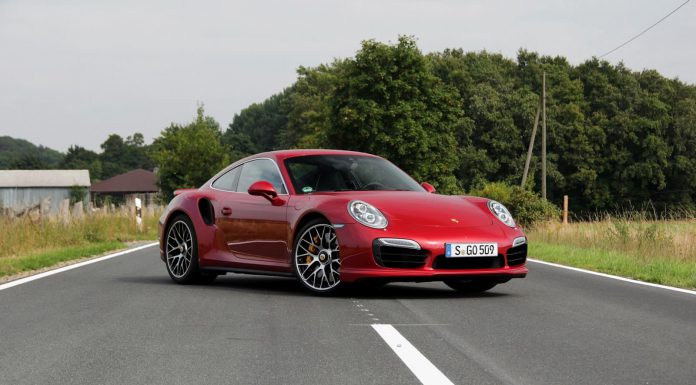











You forgot to mention the GT-R. Not in the same price range but dynamically similar and superior.
Superior, how? Maybe in performance, but have you sat in one? Grim. Give me my 991 any day.
Gt-r is no where near as fast as a turbo s.Read any test and see the 0 to 60 and quarter mile tests and watch them race on you tube.Both cars stock the turbo s even kills a Nismo Gt-r.
Mark is right. We didn't include the Nissan GT-R because we doubt many people looking at the 991 Turbo S will settle for a Nissan GT-R. Performance is in favor of the GT-R but it doesn't come close to the heritage, image and luxury of the 911. Don't get us wrong, we like the GT-R but talking about the 991 Turbo it is not a direct competitor.
"performance is in favour of the GT-R"..you guys need to spend more time in the real world :)) , preferably on track.
gtr is a awesome car! sadly it has no pedigree or racing history to talk of and will always remain what it is, a great japanese car!
0-60 in 2.7 seconds and Nurburgring times that are better than 911 Turbo S. The GT-R beats Turbo S even in shorter tracks.
GTspirit.com Then again, the GT-R is MUCH cheaper too, which is an advantage. Regarding heritage, the Skyline GT-R heritage is full of victories in drag, drift and circuit racing…
GTR – Performance is expected, 911 excellence is expected – The former most major manufactures can achieve, the later most can't – If Porsche, Ferarri, Aston etc. produced the Nissan it would be a flop. Comparing cars based on stats alone is obtuse – When Nissan GTR clocks up 50 years of of racing significance the likes of AMLS, Can Am, Le Mans, Daytona, Nurbergring, Targa florio, Paris dakar, etc… whilst also achieving a beautiful design, to stand the test of time, with very high levels of comfort and quality – then start to compare… Perhpas compare the Nissan to say a ford, though again Ford history spanks Nissan in Motor sport too…. Skoda perhpas, though that has some Rally success…
GTspirit.com
Yes, it is hard for Porsche lovers to be beaten daily by the GTR and the Nismo smokes all.
Where do you get your facts?In a dream?Go on the internet and see the comparison test between a 991 turbo s and Gtr Nismo.The porsche wins.Much faster .
I'd take a Porsche over a Nissan anytime.
In South Africa, the Turbo S cost (Rand) R2.94 million with 5yr drive plan or R2.89m with 3yr drive plan. The 458 italia cost about R4m, the Mclaren 12C /650S +R4m and the new Lamborghini Huracan about R4.7m. Therefore this Turbo S looks like a bargain, if you in the market for a super car. It may not be as exotic, or have the V8/ V10 growl, But its a great daily driver, with performance to match its exotic rivals. It would be my pick of the bunch.